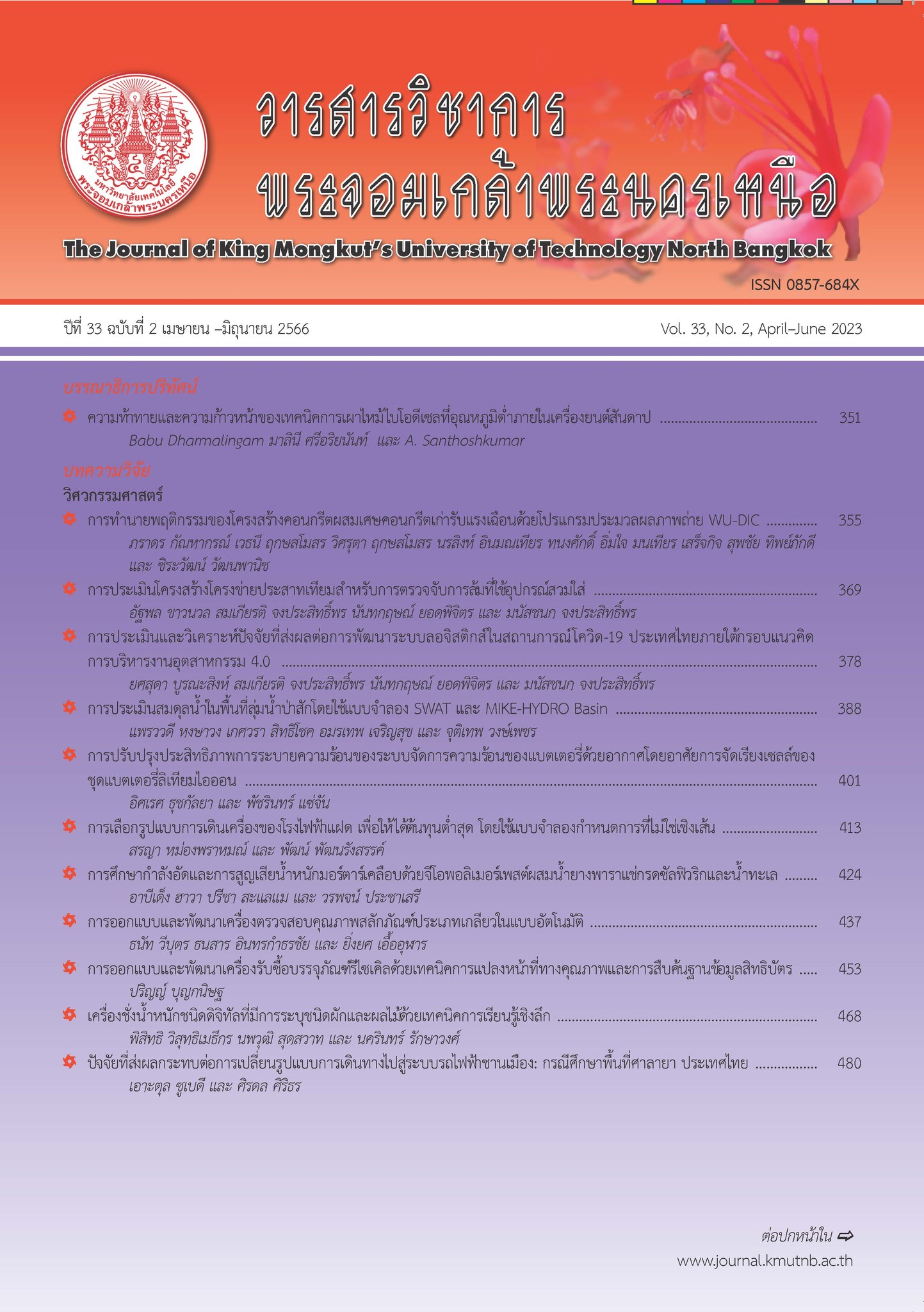วิธีการเชิงพันธุกรรมสำหรับการวางแผนกำลังการผลิตที่ขึ้นกับความเชี่ยวชาญของพนักงานโดยพิจารณาการเรียนรู้และการหลงลืม
Main Article Content
บทคัดย่อ
แรงงานถือเป็นปัจจัยหนึ่งที่ควรคำนึงถึงในการวางแผนการผลิต คุณลักษณะพิเศษของแรงงานคือมีการเรียนรู้และการหลงลืมตามประสบการณ์และความถี่ในการทำกิจกรรมการผลิตแบบใดแบบหนึ่ง ซึ่งส่งผลต่อกำลังการผลิตของพนักงานแต่ละคนและส่งผลต่อกำลังการผลิตรวม การวางแผนการผลิตและมอบหมายงานสำหรับองค์กรที่มีสินค้าหลากหลายและความต้องการสินค้าไม่คงที่ มีความยุ่งยากในการตัดสินใจโดยเฉพาะกับผู้วางแผนที่เป็นมนุษย์ งานวิจัยนี้นำเสนอการนำอัตราการเรียนรู้และการหลงลืมมาพิจารณากำหนดกำลังการผลิตของพนักงานในการวางแผนการผลิตและมอบหมายงานให้พนักงานแต่ละคน การมอบหมายงานที่เหมาะสมกับความเชี่ยวชาญของพนักงานจะช่วยลดเวลาที่ใช้ในการผลิตลงหรือทำให้มีกำลังการผลิตเพิ่มขึ้นได้เมื่อเทียบกับการวางแผนการผลิตด้วยนโยบายมอบหมายงานแบบตายตัว โดยงานวิจัยนี้ใช้วิธีการเชิงพันธุกรรมในการหาคำตอบหรือแผนการผลิตโดยมีเป้าหมายเพื่อกำไรสูงสุด มีการทดสอบพารามิเตอร์ของวิธีการเชิงพันธุกรรม 4 รูปแบบ ได้แก่ C4M3 C4M7 C8M3 และ C8M7 ผลการทดลองพบว่าวิธีการเชิงพันธุกรรมมีประสิทธิภาพที่ดีกว่าคือให้ผลกำไรที่สูงกว่าเมื่อเปรียบเทียบกับนโยบายการมอบหมายงานแบบตายตัว โดยรูปแบบพารามิเตอร์ที่เหมาะสมคือ C8M3 เนื่องจากมีประสิทธิภาพในการหาคำตอบที่ให้กำไรสูงสุดและใช้เวลาในการหาคำตอบน้อย
Article Details

อนุญาตภายใต้เงื่อนไข Creative Commons Attribution-NonCommercial-NoDerivatives 4.0 International License.
บทความที่ลงตีพิมพ์เป็นข้อคิดเห็นของผู้เขียนเท่านั้น
ผู้เขียนจะต้องเป็นผู้รับผิดชอบต่อผลทางกฎหมายใดๆ ที่อาจเกิดขึ้นจากบทความนั้น
เอกสารอ้างอิง
A. Cheraghalikhani, F. Khoshalhan, and H. Mokhtari, “Aggregate production planning: A literature review and future research directions,” International Journal of Industrial Engineering Computations, vol. 10, no. 2, pp. 309–330, 2019.
L. E. Yelle, “The learning curve: Historical review and comprehensive survey,” Decision Sciences, vol. 10, no. 2, pp. 302–328, 1979.
M. Y. Jaber and M. Bonney, “A comparative study of learning curves with forgetting,” Applied Mathematical Modelling, vol. 21, no. 8, pp. 523–531, 1997.
A. B. Badiru, Handbook of Industrial and Systems Engineering, 2nd ed. Boca Raton: CRC Press, 2013, pp. (30-1)-(30-27).
P. Kampkötter, C. Harbring, and D. Sliwka, “Job rotation and employee performance – evidence from a longitudinal study in the financial services industry,” The International Journal of Human Resource Management, vol. 29, no. 10, pp. 1709–1735, 2016.
Y. Demir and S. K. İşleyen, “An effective genetic algorithm for flexible job-shop scheduling with overlapping in operations,” International Journal of Production Research, vol. 52, no. 13, pp. 3905–3921, 2014.
W. Xu, Y. Hu, W. Luo, L. Wang, and R. Wu, “A multiobjective scheduling method for distributed and flexible job shop based on hybrid genetic algorithm and tabu search considering operation outsourcing and carbon emission,” Computers & Industrial Engineering, vol. 157, 2021, Art. no. 107318.
R. Chakrabortty and M. Hasin, “Solving an aggregate production planning problem by using multi-objective genetic algorithm (MOGA) approach,” International Journal of Industrial Engineering Computations, vol. 4, no. 1, pp. 1–12, 2013.
G. J. Hahn and M. Brandenburg, “A sustainable aggregate production planning model for the chemical process industry,” Computers & Operations Research, vol, 94, pp. 154–168, 2017.
A. Chaimanee and W. Supithak, “Flexible flow shop scheduling problem with sequence dependent setup time under just-in-time philosophy,” The Journal of KMUTNB, vol. 25, no. 2, pp. 219–231, 2015 (in Thai).
C. Liu, J. Wang, and J. Y. Leung, “Worker assignment and production planning with learning and forgetting in manufacturing cells by hybrid bacteria foraging algorithm,” Computers & Industrial Engineering, vol. 96, pp. 162–179, 2016.
T. Kataoka, K. Morikawa, and K. Takahashi, “Strategic human resource management simulation considering work elements, skills, learning and forgetting,” Procedia Manufacturing, vol. 39, pp. 1633–1640, 2019.

